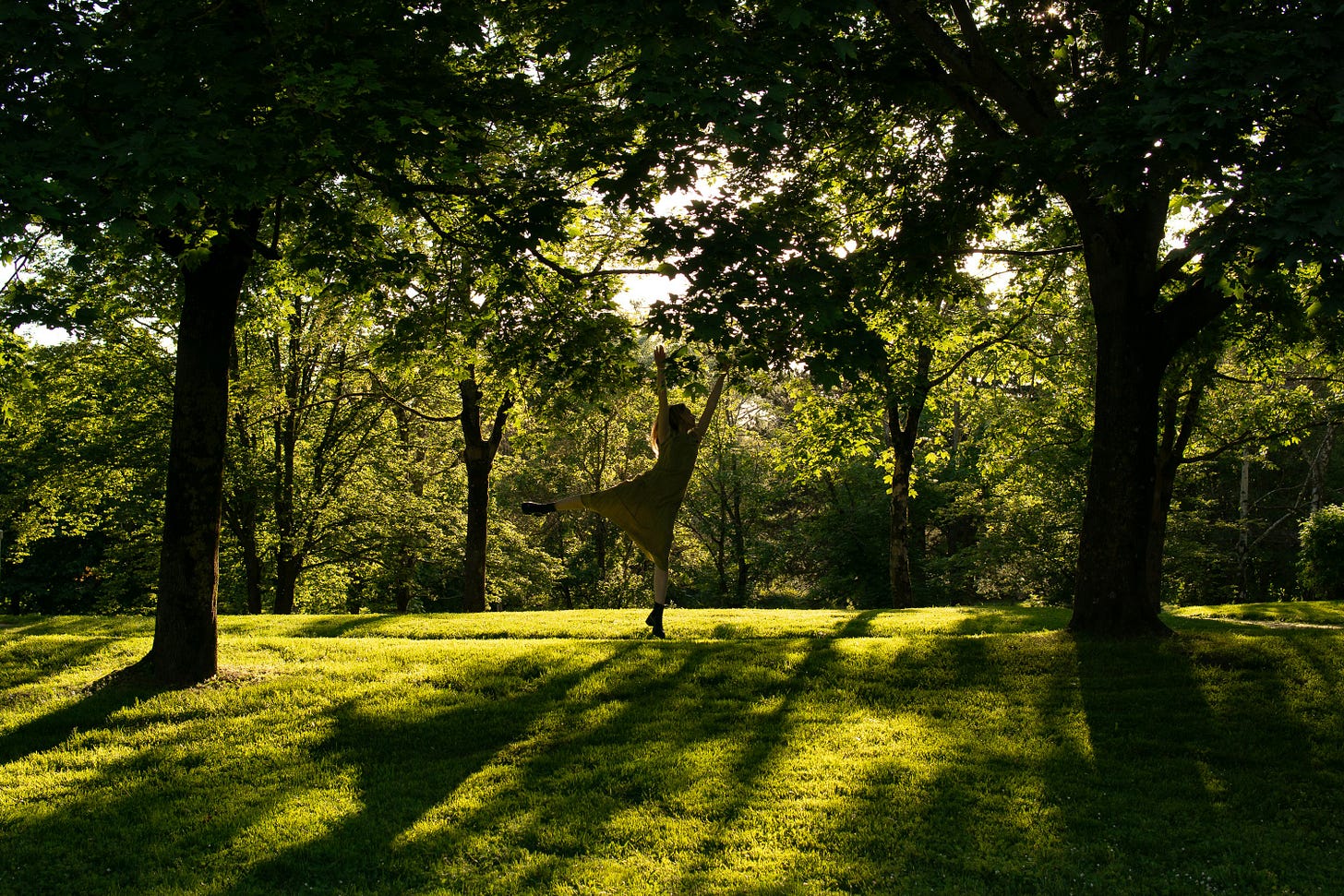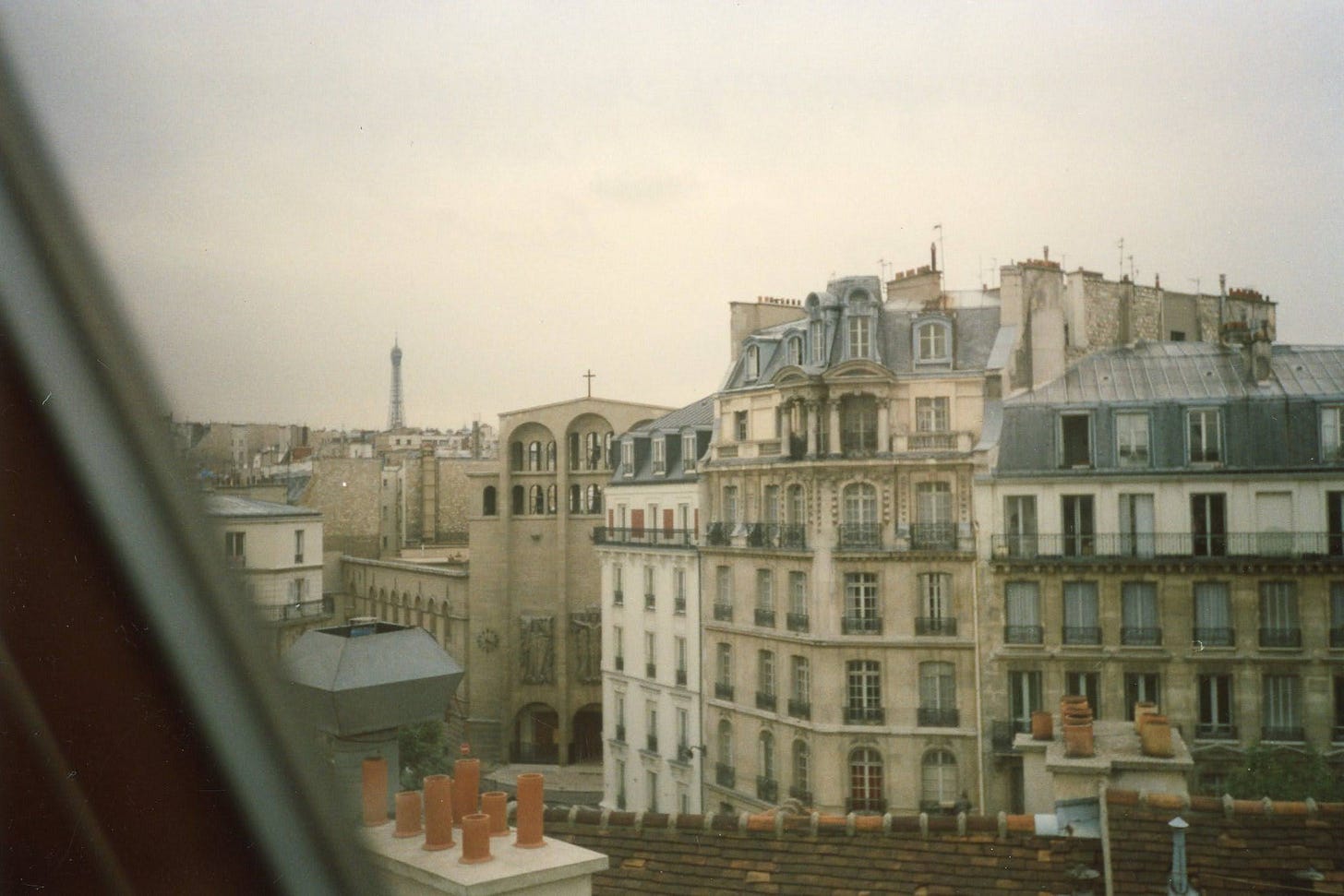
I believe we are all born with an innate love for ourselves, knowing we are good and loved and a blessing to the world. It’s a Divine Spark that dwells deep within.
This innate love encompasses a deep connection between mind, body, and spirit. A wholeness of being. As babies and children, we fully inhabit our bodies. We are uninhibited and free in them.
Somewhere along the way, wholeness shatters. Perhaps it is caused by the people closest to us, perhaps by pervasive messages from the culture we swim in that we are not “good” enough, that our bodies are “bad," and that we are “broken.”
We become disembodied.
I can’t tell you the exact moment when I began to see myself as separate from my body. But I can tell you when my embodied self took its final bow, the curtain fell, and the theatre went dark for years.
Becoming Disembodied
At twenty-two, I boarded a plane to Paris. A recent college graduate, I was on my way to live and work as a jeune fille au pair – a nanny – for a French family.
I wanted an adventure. I wanted to immerse myself in French after years of studying the language in high school and college. To experience all the City of Light had to offer.
But until I was trapped in a plane over the middle of the Atlantic Ocean, I hadn’t considered the consequences of leaving my family and friends for a year and moving to a city where I knew no one.
What had I been thinking?
The weight of my decision sat on my chest. My heart physically ached.

Within my first few weeks, the initial loneliness and homesickness began to dissipate. I began French classes at the Sorbonne and met other nannies from the States. One of them invited me to run with her after class at a track near the Eiffel Tower.
I started running in college. The soothing rhythm of my strides helped me escape the pressures of studying, maintaining my GPA, choosing a major, and deciding what I was going to do with the rest of my life. At the end of each run, my mind was clear, and my skin tingled with a rush of energy. I felt fully alive and at home in my body.
In Paris, I discovered the Bois de Boulogne, a large park a few blocks from where I lived. I started running there, alone, on Saturday mornings. I loved the park because its tree-lined paths and wildness (compared to the manicured parks in the city) reminded me of a park just a few blocks from my home in the U.S. The Bois de Boulogne offered a momentary escape from the constant noise of sirens blaring and horns honking, and from the smells of garbage, smoke, and fish.
The freedom of running alone in the Bois de Boulogne was stripped away from me the morning a man sexually assaulted me after a run there.
After the assault, I separated from my body because being in my body was no longer a safe place to be. The separation had started years earlier, with societal messages about weight and body image. Messages—subtle and indirect—from my mother and friends also played a role.
But trauma brought it into full focus. Within three years of the assault, I started treatment for anorexia. Years of excessive exercise and starving myself had taken its toll. In my effort to forget the assault—shove it away and keep it secret from my family and friends—I’d pushed away from myself. At 5 feet 6 inches tall and 90 pounds, my flat-chested, skeletal frame betrayed my secret.
Finding My Way to Embodiment
When I was diagnosed with an eating disorder in the mid-1990s, the concept of embodiment—the idea of being fully present in our bodies and seeing them as an integral part of who we are rather than something we merely possess—was virtually absent from the conversation.
I became a student of embodiment by necessity.
Recovery from anorexia required me to begin finding my way back to my body—to nourish it with the sustenance it needed and to discover new ways to inhabit it, such as through yoga and swimming, rather than punishing it with daily six-mile runs.
I had to begin to embrace my body as it was.
My journey toward embodiment has been one of experience, exploration, and experimentation.
None of it has been easy or linear.
It is ongoing and never-ending. There is no moment of arrival, only a descent deeper into the presence and acceptance of my whole self—which sometimes lasts for only a moment, and I find myself separated again. It’s like a spiral staircase I travel up and down, circling around to places I’ve been before, but this time with a new perspective and hopefully a little more compassion and grace for myself.
Welcome and an Invitation
Walking the spiral staircase takes courage. And it’s easier with companions.
That’s why I’m here. I want to walk with you, share my stories, and hear yours. We’ll lend one another a hand as we search for more gentle, compassionate ways of being with ourselves and being in the world.
I hope to offer a safe place for discussion and exploration, where we can learn together and perhaps take steps back to our bodies, toward trusting our bodies and our intuition. I’ll share with you what I’ve learned about embodiment, spirituality, and healing after trauma on my path toward embracing myself, building self-trust, and cultivating self-love. I’ll offer practices you might experiment with, such as journaling prompts, book recommendations, and more.
Maybe something I offer will spark you to action or reflection. If so, I’d love to hear from you.
You are welcome here.
With your questions, doubts, and curiosity.
You are welcome here.
With your imperfections, anxieties, and pain.
You are welcome here.
With your awe, wonder, and joy.
Thank you for joining me. I’m so glad you’re here!






I'm so happy to see you on Substack, Deborah! Your newsletter has been a favorite of mine for a long time. I love your writing and look forward to connecting more with you here!
And welcome to Substack! It’s lovely to see you here!